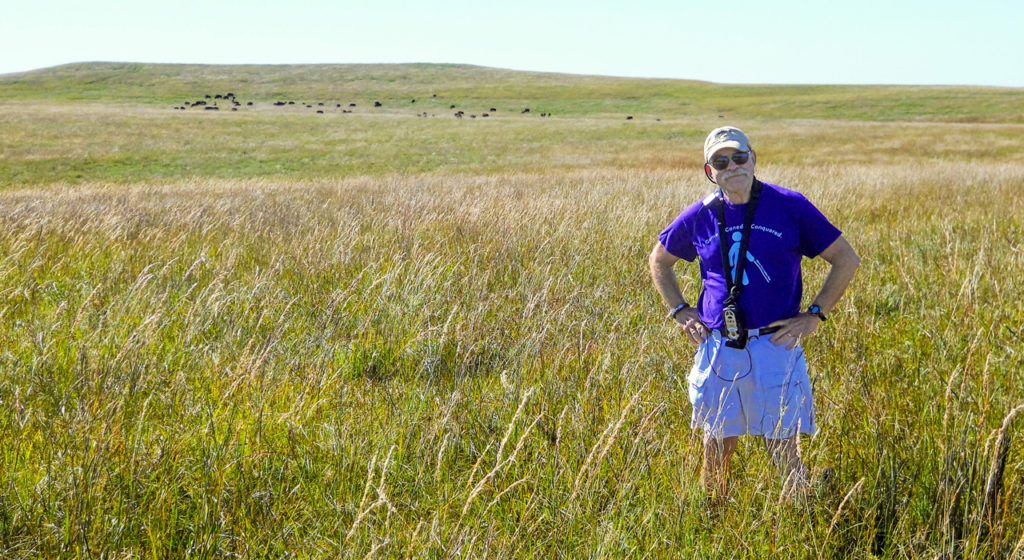Alumnus uses GPS technology to make national park accessible for the visually impaired
By ANTHONY RODRIGUEZ
Hiking the trails of the Tallgrass Prairie National Preserve offers a first-hand look back to America’s frontier. Bison roam freely. Cowboys herd grazing cattle. Prairie grasses tower six feet high, sheltering wildflowers and wildlife that paint a diverse ecosystem in the heart of Kansas’s rolling Flint Hills.
The wide-open spaces of the national park offer beautiful vistas to more than 29,000 visitors each year.
But for those who have impaired vision, those treasures are not easily accessible. Park rangers at Tallgrass wanted to change that, so they solicited the help of an EHE alumnus for a solution.
Craig Phillips’ (’72) expertise in serving blind and low-vision individuals with global positioning systems will open the preserve to a new population.
Last summer, during the National Parks Service centennial celebration, the certified orientation and mobility specialist dropped electronic markers with location and narrative information throughout the 40 miles of hiking trails at the 10,000-acre park.
“My role was to paint pictures with words, tie in the appropriate sounds and scents of the environment, provide information and reinforce and validate what the traveler was experiencing,” Phillips said.
To ensure this robust experience, he thoroughly tested the GPS by walking the trails blindfolded.
This experiential testing is used by teachers of the visually impaired and certified orientation and mobility specialists to ensure the best use of
nonvisual information, how to process information and how to interpret tactile information.
“Under the blindfold, I had to rely on the recorded information and make adjustments in my thinking and responses to the environment,” Phillips said.
“The surfaces under my feet, the topography of the terrain, the direction of the sun, and the interference of the wind, rain and bugs all became part of the equation.”
The technology, paid for with a grant from the U.S. Department of Interior, is the only one of its kind in the National Parks.
“It wouldn’t have been the project that it turned out to be if it wasn’t for Craig,” said Heather Brown, chief of interpretation at Tallgrass Prairie National Preserve. “I am so glad that we could work with him.”
A guide to grandeur
The GPS device serves as a tour guide of the park. To make the narrative, Phillips hiked the trails with a park ranger who had considerable knowledge of the area.
That rich experience imparts knowledge about the park’s history, the people who settled the area, the geology, flowers, birds, bison and other animals in the park.
The device also is equipped with essential location and safety information.
“It’ll be just like having a ranger walking the park with you,” Phillips said. He has pioneered using GPS technology to help visually impaired people get around the world.
In the early 2000s, he recognized the benefits of GPS but found no resources to help the visually impaired.
So he did the research himself and created a curriculum to teach students with visual impairments how to use the equipment to navigate. Phillips’ work was published in the Journal of Visual Impairment and Blindness in 2011.
“It is my hope that the National Parks Service looks at this project and seriously considers making more of its parks accessible to the visually impaired,” he said. “They deserve to be able to use the parks the same as the sighted.”

